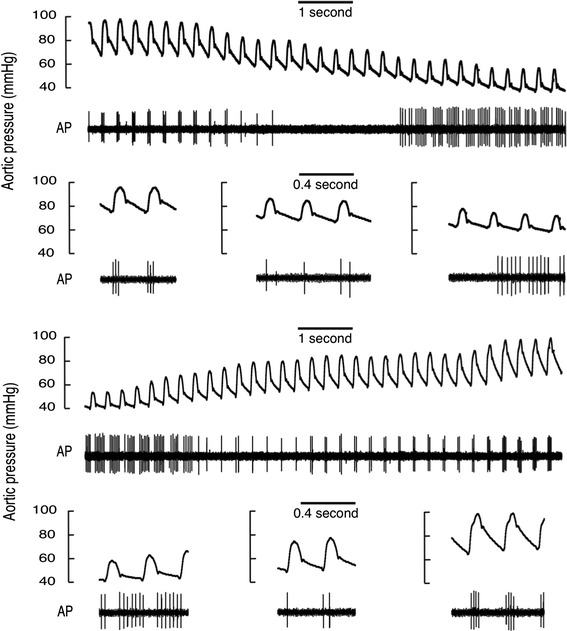Fig. 7.

Responses of a type D baroreceptor to ramps of decreasing and increasing aortic pressure. The ramps encompass baseline control and lower pressures and were obtained by gradual inflation followed by gradual deflation of a cuff around the inferior vena cava. At higher pressures in both ramps firing occurs in systole, while at lower pressures it occurs during diastole. In comparison to responses to increasing pressure, with falling pressure the baroreceptor activity tended to be lower at any particular pressure and became silent when switching between the two firing modes. All our measurements and classifications in this paper were made on ramps of increasing pressure, thus we categorised this fibre as type D rather than type C
